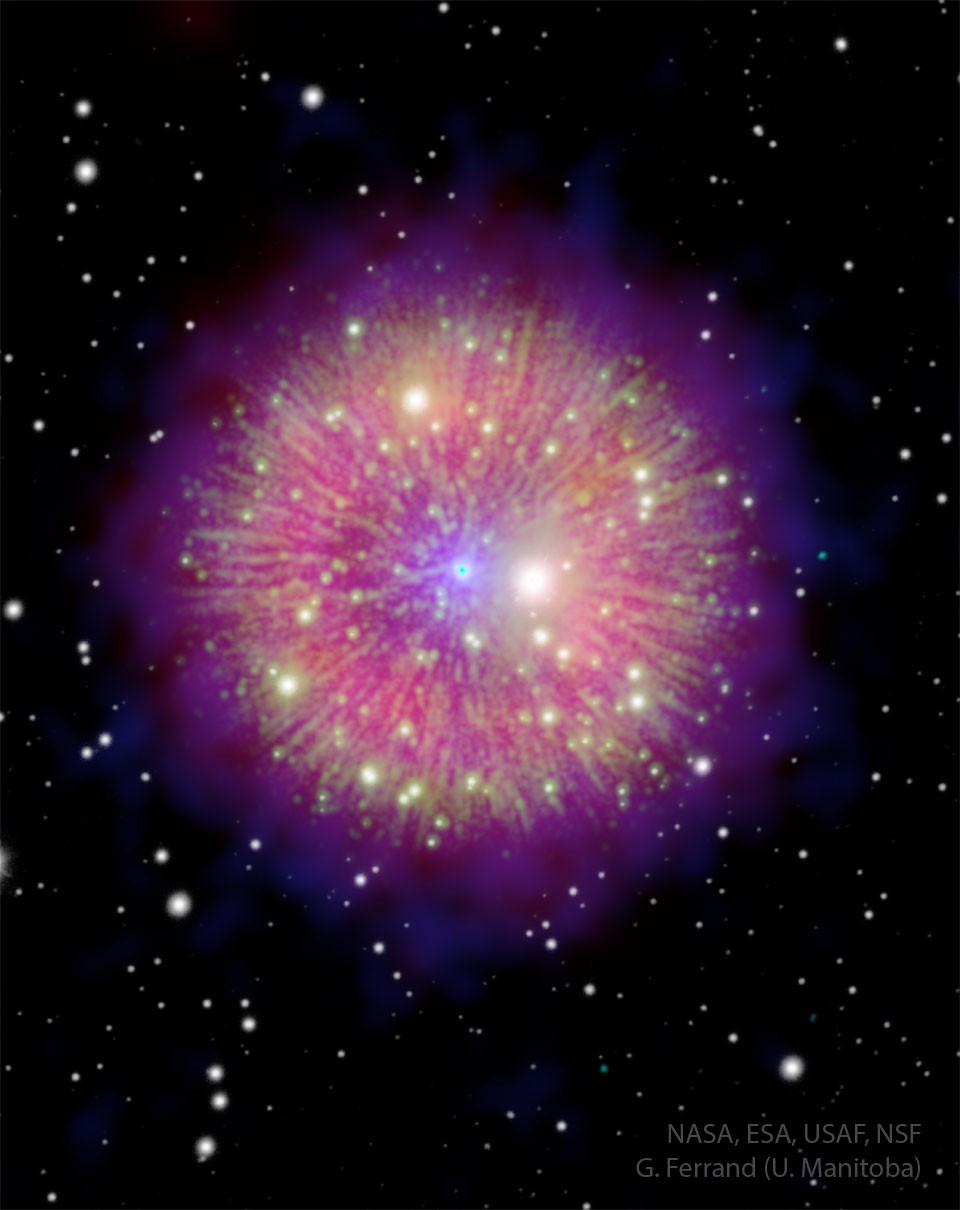2024年4月3日
Unusual Nebula Pa 30
Image Credit: NASA, ESA, USAF, NSF;
Processing: G. Ferrand (U. Manitoba), J. English (U. Manitoba), R. A. Fesen (Dartmouth), C. Treyturik (U. Manitoba);
Text: G. Ferrand & J. English
Explanation: What created this unusual celestial firework? The nebula, dubbed Pa 30, appears in the same sky direction now as a bright “guest star” did in the year 1181. Although Pa 30’s filaments look similar to that created by a nova (for example GK Per), and a planetary nebula (for example NGC 6751), some astronomers now propose that it was created by a rare type of supernova: a thermonuclear Type Iax, and so is (also) named SN 1181. In this model, the supernova was not the result of the detonation of a single star, but rather a blast that occurred when two white dwarf stars spiraled together and merged. The blue dot in the center is hypothesized to be a zombie star, the remnant white dwarf that somehow survived this supernova-level explosion. The featured image combines images and data obtained with infrared (WISE), visible (MDM, Pan-STARRS), and X-ray (Chandra, XMM) telescopes. Future observations and analyses may tell us more.
NASA Coverage: Total Solar Eclipse of 2024 April 8
Tomorrow’s picture: the comet at night
不寻常的星云Pa 30
影像提供: NASA, ESA, USAF, NSF;
影像处理: G. Ferrand (U. Manitoba), J. English (U. Manitoba), R. A. Fesen (Dartmouth), C. Treyturik (U. Manitoba);
文稿: G. Ferrand & J. English
说明: 是什么造就了这团不寻常的天体烟火?这团名为Pa 30的星云,目前在天空中的方位,和1181年所见到的明亮“客星”在同一方向。尽管Pa 30的丝状结构看起来与新星(例如GK Per)和行星状星云(例如NGC 6751)产生的丝状物相似,但天文学家现在提议,它是由一种罕见、分类为Iax的热核爆炸超新星所造成的,因此它的另一重身分是SN 1181。在目前提出的模型里,这颗超新星并不是由单一恒星的爆炸造成的,而是由两颗盘旋互绕的白矮星合并时所触发的爆炸。星云中心的泛蓝光斑假定是颗僵尸恒星,是不知如何在这例超新星等级的爆炸里孑遗下来的白矮星残骸。这张主题影像,整合了来自红外光(WISE)、可见光(MDM, Pan-STARRS)和X射线(Chandra, XMM)望远镜的影像和数据。未来的观测和分析,或许可以提供更多关于这个天体的资讯。
NASA报道: 2024年4月8日日全食
明日的图片: the comet at night


Pingback: 全食日的细致日冕 – NASA中文